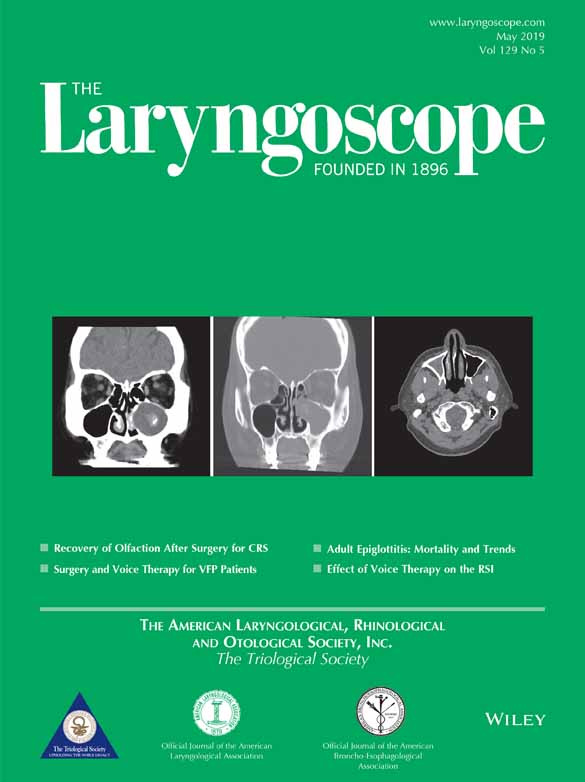The Relationships Between the Nasolacrimal Duct and the Anterior Wall of the Maxillary Sinus
Editor's Note: This Manuscript was accepted for publication on June 07, 2018
Abstract
Objectives/Hypothesis
To examine the anatomic relationships between the lower end opening into the inferior meatus of the bony nasolacrimal duct (NLD) and the anterior wall of the maxillary sinus.
Study Design
Anatomical investigation.
Methods
A total of 206 individuals were recruited for detailed anatomic investigation of the lower end of the bony NLD and their relation to the anterior wall of the maxillary sinus by high-resolution computed tomography (HRCT) imaging. The observed features were classified as either a fusion type or separation type, according to the HRCT images. Additionally, the angle between the anterior and medial wall of the maxillary sinus was classified as either an anterior mode or lateral mode.
Results
The NLD anatomical fusion type was found in 40.05% and the separation type in 59.95% of the HRCT imaging scans available. The anterior mode of angle between the anterior and medial wall of the maxillary sinus was present in 64.1% of the images, and the lateral mode in 35.9% of the images. In 165 cases of anatomical fusion, the anterior mode of angle was present in 15.8% and the lateral mode in 84.2% of cases. In 247 cases of anatomical separation, the anterior mode was present in 97.2% and the lateral mode in 2.8% of cases.
Conclusions
The surgical anatomy of the lower end of the bony NLD and anterior wall of the maxillary sinus displays varied relationships. Preoperative use of HRCT and an awareness of the particular type of anatomical feature present are likely to aid in planning and performing successful endoscopic medial maxillectomy.
Level of Evidence
4 Laryngoscope, 129:1030–1034, 2019




